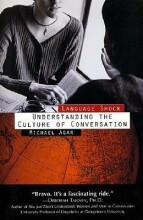Summary: Ethnocentricism And Othering
- This + 400k other summaries
- A unique study and practice tool
- Never study anything twice again
- Get the grades you hope for
- 100% sure, 100% understanding
Read the summary and the most important questions on Ethnocentricism and Othering
-
1 Introduction
-
What can lead to stereotyping, prejudice, racism, and ethnocentricism?
Our preference for things we understand are are familiar with can adversely influence our perception of and attitude toward new and different people and things. -
What lie at the heart of identity biases and discrimination?
Social categorization and ethnocentricism. -
2 Social categorization and othering
This is a preview. There are 3 more flashcards available for chapter 2
Show more cards here -
What is social categorization?
It refers to the way we group people into conceptual categories in order to make sense of our increasingly complex social environment. -
What is the act of perception?
Becoming aware of, knowing, or identifying by means of the senses through a three-step process involving selection, organization and interpretation. -
How do we cope with a variety of perceptual stimuli?
We try do reduce information to manageable forms; we typically place people into different groups and categories based on our current understandings, perceptions and experience. We make inferences about individual behaviour based on group patterns. -
What is Otherization or Othering?
A form of social representation which involves the objectification of another person or group. culture is used to account for all of the views and behaviours of the other, largely ignoring the complexity and diversity of individual characteristics. -
Why can essentialism and other negative consequences of Othering be very harmful to intercultural relations?
The cognitive activities of categorization and generalization that occur normally in the human brain are an important way of making sense of the world around us. Although such categorizations are useful as sense-making strategies for human behaviour, if unchecked, they can lead to more extreme understandings of cultural difference, such as ethnocentricism, stereotyping, and prejudice - the roots of racism. -
What is the social identity theory (Tajfel & Turner, 1970s and 1980s)?
A basic tenant of this theory is the notion that individuals tend to categorize people in their social environment into ingroups and outgroups. It posits that it is natural for people to seek ways to strengthen their self-esteem and to strive to achieve or to maintain a positive social identity. -
What are ingroup members?
People with whom you feel connected to or owe a sense of loyalty and allegiance. -
What are outgroup members?
Those with whom one feels emotionally and psychologically detached.
- Higher grades + faster learning
- Never study anything twice
- 100% sure, 100% understanding
































